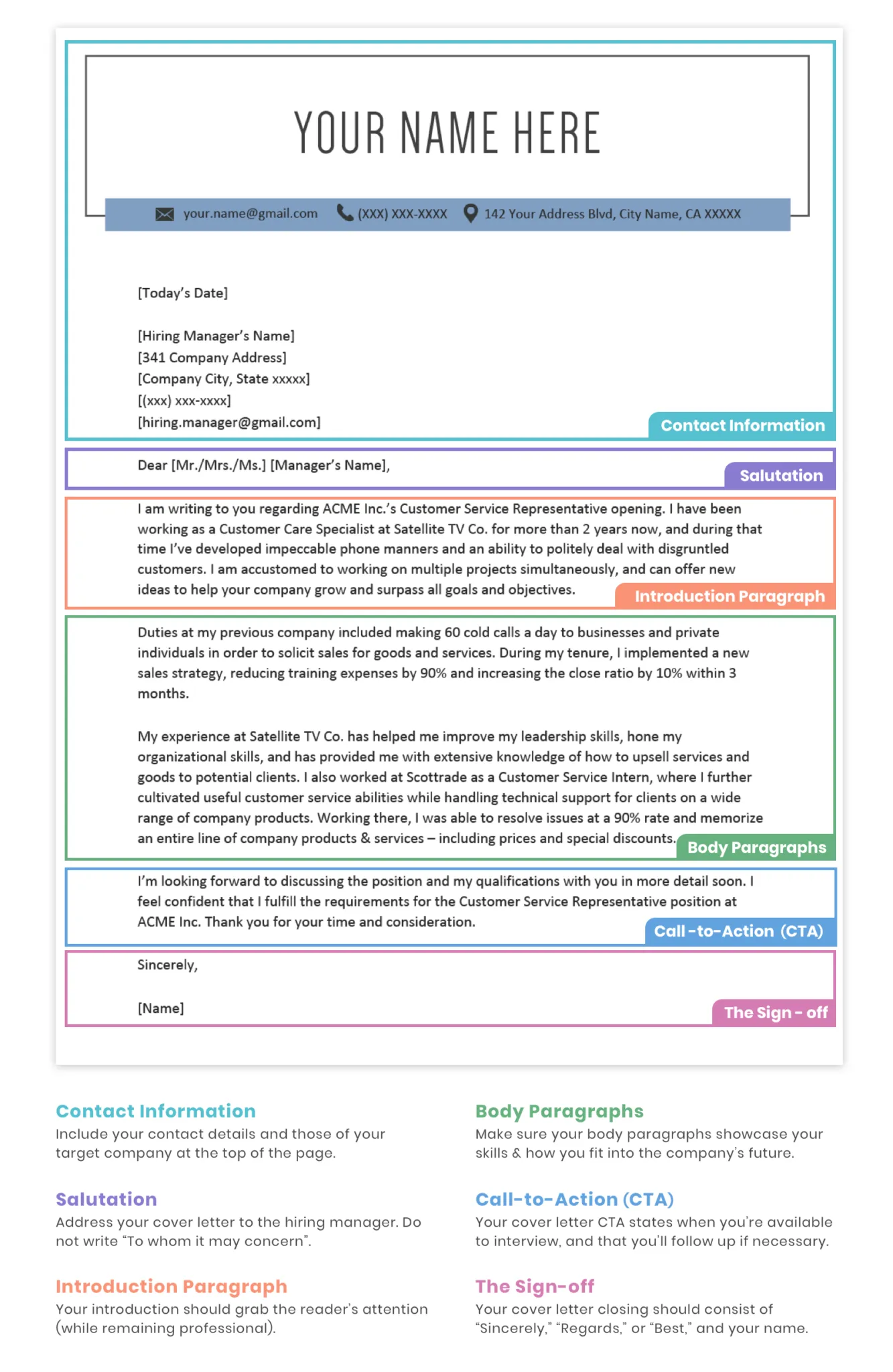Why a Cover Letter is Essential
In the competitive job market, a cover letter serves as your first impression, going beyond the information on your resume to provide a narrative of your skills, experiences, and aspirations. It’s not just a formality; it is your opportunity to show your unique personality, express your genuine interest in the specific role and the company, and articulate why you are the ideal candidate. Many hiring managers use cover letters to gauge your communication skills, attention to detail, and overall fit within their team and company culture. A well-crafted cover letter can significantly increase your chances of getting your resume noticed and securing an interview, while a poorly written one can lead to your application being immediately discarded.
Understanding the Job Description
Before you start writing, thoroughly analyze the job description. Identify the key requirements, skills, and qualifications the employer is looking for. Look for keywords that are frequently mentioned, as these are crucial for both applicant tracking systems (ATS) and human readers. Make a list of these keywords and consider how your skills and experiences align with each one. Tailoring your cover letter to match the job description demonstrates that you have taken the time to understand the role and are committed to meeting the employer’s needs. This targeted approach will help you stand out among other candidates.
Researching the Company
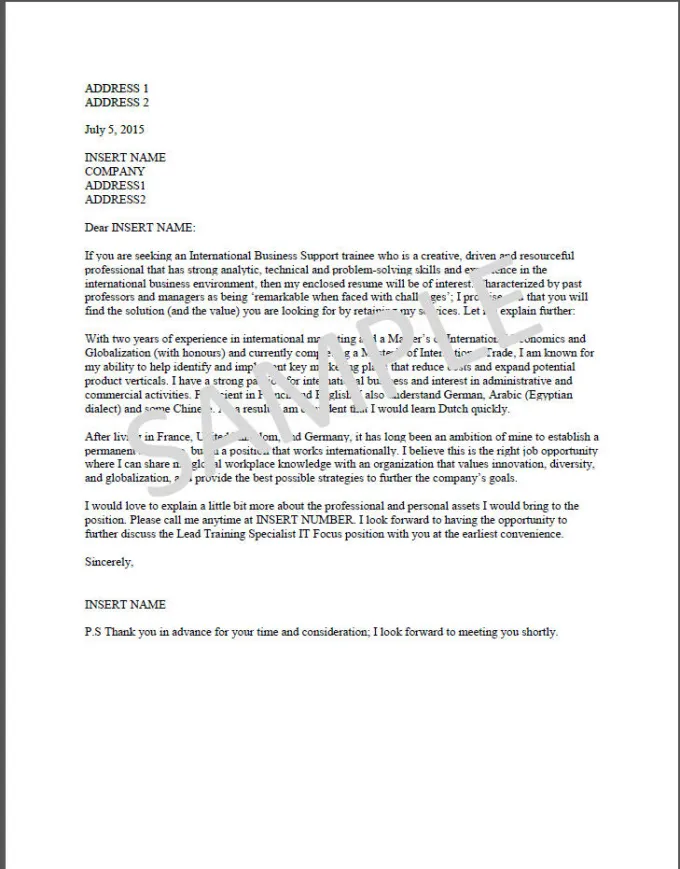
Demonstrate your interest and initiative by researching the company. Visit their website, read their ‘About Us’ section, and explore their social media profiles. Understand their mission, values, recent news, and any specific projects or initiatives they are involved in. This research helps you to personalize your cover letter, showing the hiring manager that you’re not just applying for any job, but are genuinely interested in their company and its culture. Use this information to connect your skills and experiences to the company’s goals and values, emphasizing how you can contribute to their success.
Key Components of a Cover Letter
A well-structured cover letter includes several key components that work together to create a compelling narrative. These components include your contact information, a professional salutation, a compelling opening paragraph, detailed body paragraphs that highlight your skills and experience, a strong closing paragraph, and a clear call to action. Each section plays a crucial role in conveying your qualifications and enthusiasm for the role. The organization of these components ensures that your letter is easy to read, logically structured, and effectively communicates your value to the potential employer.
Your Contact Information
At the top of your cover letter, include your full name, phone number, email address, and optionally, your LinkedIn profile URL. This information should be clearly displayed and easily accessible. Ensure your email address is professional and appropriate. This section allows the hiring manager to quickly find your contact details and reach out to you for an interview. Double-check the information for accuracy to avoid any potential communication issues.
The Salutation
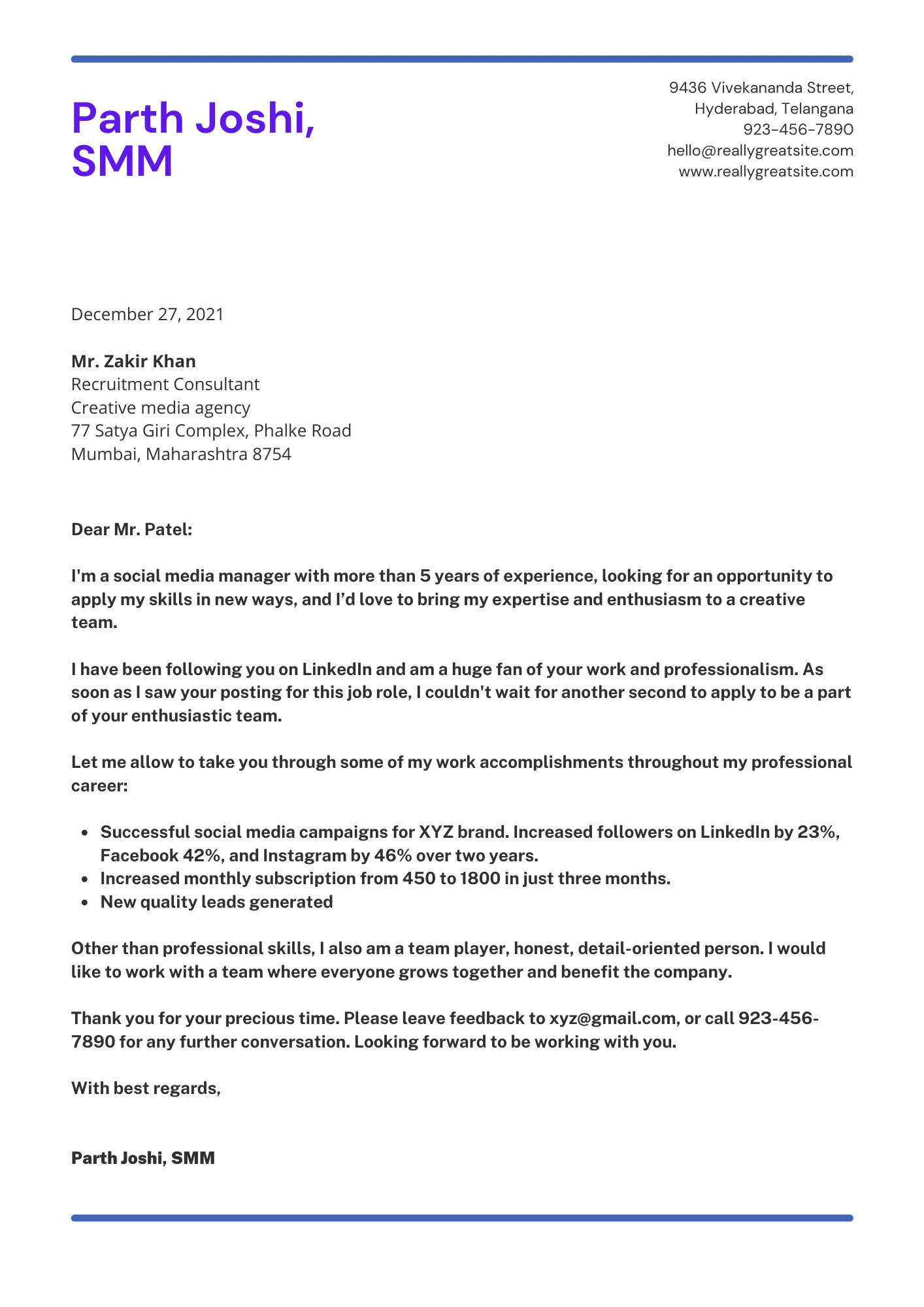
Address the hiring manager by name whenever possible. This shows that you have taken the time to research who will be reading your application and adds a personal touch. If you are unsure of the hiring manager’s name, a general salutation like “Dear Hiring Manager” is acceptable. Avoid generic greetings such as “To Whom It May Concern” as they can make your letter seem impersonal. If you are unable to find a specific name, use a professional title such as “Dear [Department Name] Hiring Team”.
Writing the Opening Paragraph
The opening paragraph is your chance to immediately grab the hiring manager’s attention. State the position you are applying for and where you saw the job posting. Briefly mention why you are interested in the role and the company. Show enthusiasm and let your personality shine through. Make it clear why you are a great fit from the start. This sets the tone for the rest of your cover letter and encourages the reader to continue. Avoid generic statements and instead, use the first sentence to showcase your genuine interest.
Highlighting Relevant Skills and Experience
Use the body paragraphs to highlight your relevant skills and experience. Refer back to the job description and emphasize the skills and qualifications that match the employer’s needs. Provide specific examples of how you have used these skills in previous roles, quantifying your achievements with data or results whenever possible. This is the section where you demonstrate your value proposition, explaining how you can contribute to the company. Your explanations should be clear and concise, keeping the reader engaged and interested.
Tailoring Your Cover Letter to the Job
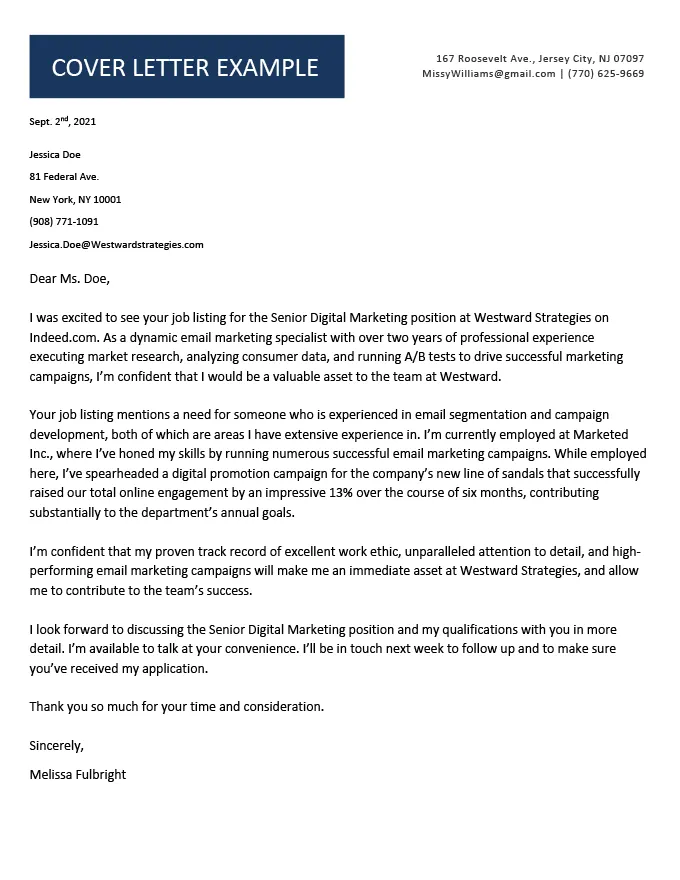
Customizing your cover letter for each job application is essential. This involves carefully reviewing the job description and identifying the specific requirements and keywords. Modify your letter to align your skills, experiences, and goals with what the employer is seeking. Avoid sending a generic cover letter; instead, take the time to demonstrate your understanding of the company’s needs and how your qualifications directly address them. This personalization will help your application stand out and show the hiring manager that you are truly interested in the role and the company.
Quantifying Your Achievements
Whenever possible, quantify your achievements with data, numbers, and metrics. Instead of simply stating that you “improved sales,” specify the percentage by which you increased sales or the dollar amount you generated. Instead of saying you “managed social media,” state the growth in followers or engagement rates you achieved. Using measurable results provides concrete evidence of your accomplishments and demonstrates the value you brought to previous roles. This approach makes your cover letter more compelling and helps the hiring manager see the direct impact you can make.
Showcasing Your Personality
While maintaining professionalism, use your cover letter to showcase your personality and enthusiasm. Let your writing style and tone reflect your character. Share your passion for the industry or company. This allows the hiring manager to get a sense of who you are as a person, and how you might fit within their team. Be genuine and authentic, and let your enthusiasm shine through. This personal touch can make your application more memorable and increase your chances of getting an interview.
Writing a Strong Closing Paragraph
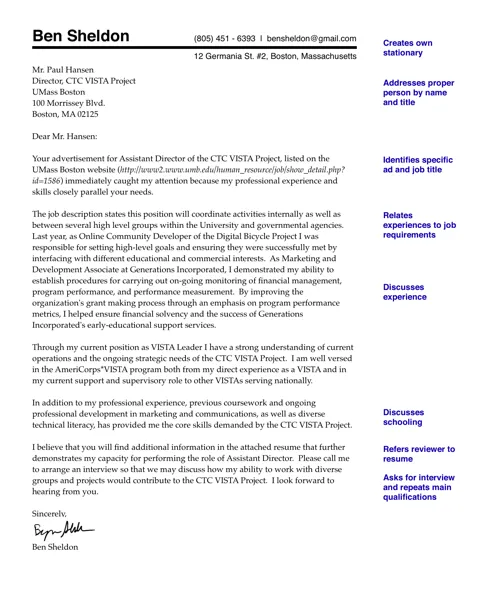
Your closing paragraph should summarize your key qualifications and reiterate your interest in the role. Reiterate your value proposition, highlighting how your skills and experiences align with the job requirements. End with a clear call to action, such as expressing your eagerness for an interview and your availability to discuss your qualifications further. Use a professional closing like “Sincerely” or “Best regards,” followed by your full name. This section should leave a positive lasting impression on the hiring manager.
The Call to Action
Include a clear call to action at the end of your cover letter, inviting the hiring manager to take the next step. State your availability for an interview and express your eagerness to discuss your qualifications further. Make it easy for them to move forward with your application by including your contact information. This action encourages the hiring manager to contact you, and it signals your commitment to the opportunity. An effective call to action is a critical part of the closing, indicating your interest and availability.
Formatting Your Cover Letter
Use a professional and easy-to-read format for your cover letter. Choose a standard font like Times New Roman, Arial, or Calibri in a 10-12 point size. Maintain consistent margins and spacing throughout the document. Break up large blocks of text with short paragraphs and ample white space. Ensure that your formatting is consistent with the formatting of your resume. Clean formatting makes your cover letter visually appealing and easy to read, which reflects positively on your attention to detail and professionalism.
Proofreading and Editing
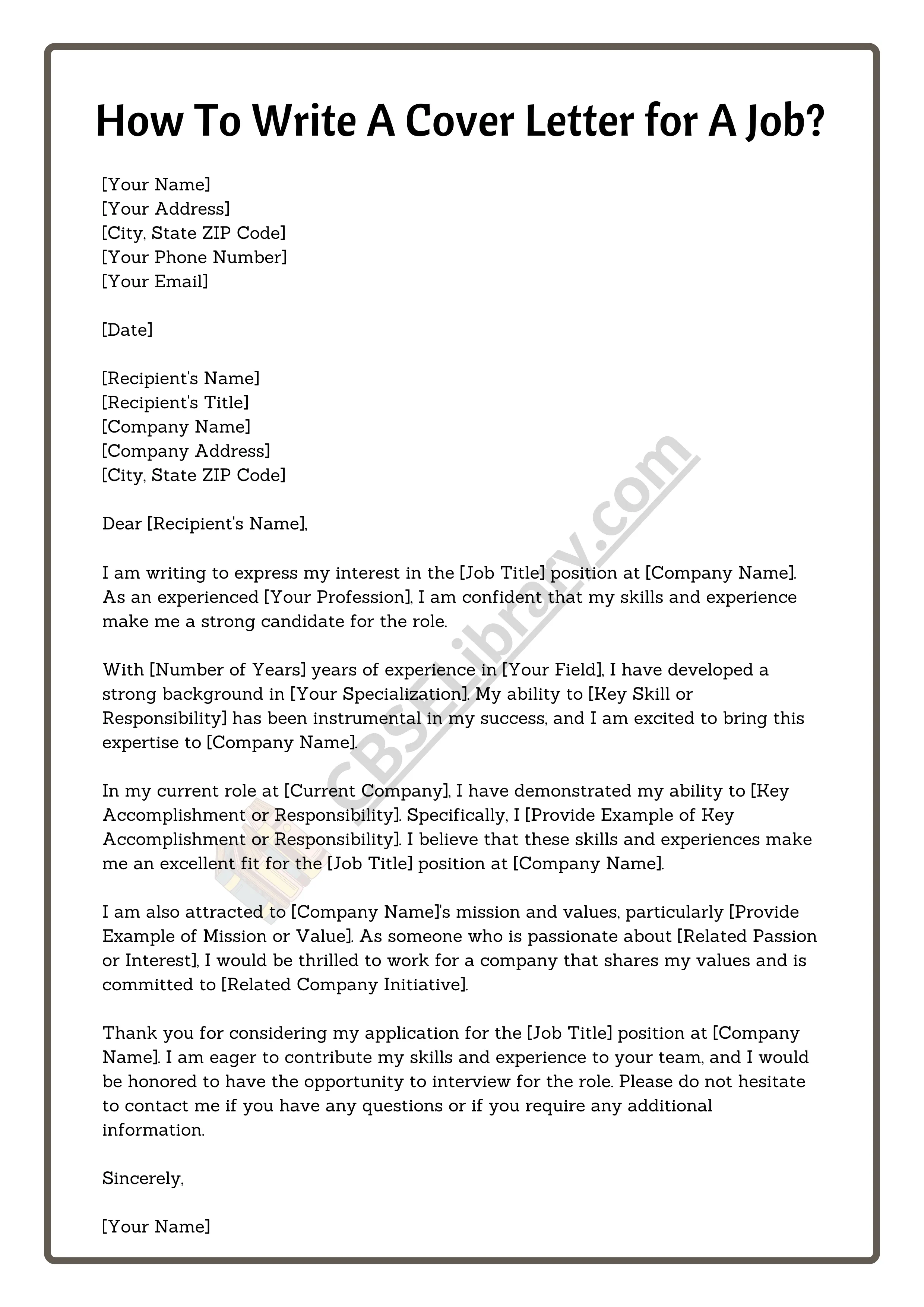
Thoroughly proofread and edit your cover letter before submitting it. Check for grammar, spelling, and punctuation errors. Review the content for clarity, conciseness, and accuracy. A cover letter with errors reflects negatively on your communication skills and attention to detail. Consider having someone else review your letter for a fresh perspective. Proofreading is one of the most important steps in crafting a successful cover letter, and should be completed with great care.
Cover Letter Mistakes to Avoid
Avoid common mistakes that can undermine your application. These include typos, grammatical errors, generic language, and a lack of personalization. Do not exceed one page in length, as hiring managers often have limited time to review applications. Never include irrelevant information or exaggerate your qualifications. Keep your tone professional and enthusiastic. These mistakes can lead to your application being rejected immediately. Take your time and ensure that you present yourself in the best possible light.
Common Cover Letter Errors
Be aware of common errors that can weaken your cover letter. Some examples include using a generic opening, focusing on your needs rather than the employer’s, and failing to address the specific job requirements. Other errors involve not tailoring the letter to the company, using passive language, and including clichés. Identifying and correcting these errors can significantly improve the quality and effectiveness of your cover letter, increasing your chances of getting an interview.
Formatting Faux Pas
Be careful to avoid any formatting mistakes that might make your cover letter appear unprofessional. Avoid using overly complex fonts, excessive use of bolding or underlining, or inconsistent spacing. Always save your cover letter in a professional format, such as PDF. A well-formatted cover letter shows that you understand how to present yourself in a professional and polished manner. Simple mistakes can be easily avoided by careful attention to detail.
Seeking Feedback and Revision
Ask for feedback on your cover letter from career counselors, friends, or mentors. Fresh perspectives can help you identify areas for improvement that you may have overlooked. Be open to suggestions and revise your letter based on the feedback you receive. Multiple drafts and revisions can significantly improve the quality and effectiveness of your cover letter. Seek feedback to catch any errors you might have missed and ensure that your letter is clear, concise, and compelling. Having an extra set of eyes will assist you in creating a stronger application.
Submitting Your Cover Letter
Submit your cover letter in the format requested by the employer. If they don’t specify a format, send it as a PDF to preserve the formatting. Make sure your cover letter is properly named and organized. Double-check that you’re applying for the correct position and that your cover letter is attached or included in your application as directed. Following the application instructions carefully demonstrates your attention to detail and respect for the hiring process, which increases your chances of a positive outcome.
